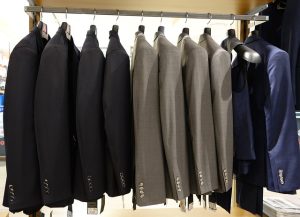Today’s consumers crave personalized shopping experiences, as retailers are well aware. After all, these heightened demands are what have led most brands to invest significant time and resources to customize how consumers shop, ranging from suggesting relevant products and reminding shoppers when to replenish products, to creating interactive experiences to help shoppers identify and discover new products.
Yet, there’s still one part of the shopping experience that often remains frustratingly generic: checkout.
It’s not that retailers are completely satisfied with their generic, one-size-fits-all checkout offerings–most have seen checkout as “broken” for years, blaming it for
consumers abandoning their carts at up to a 70% rate. But the industry has ingrained in retailers that checkout is one-size-fits-all, all but untouchable and unfixable.
That’s not to say that retailers haven’t tried. The problem is that among the vast majority of retailers that have made attempts to fix checkout, the focus has been heavily skewed towards increasing conversion rates. There have been all types of attempts, such as implementing one-click checkout across the board in hopes that speed will equate to increased sales. These “fixes,” however, fail to address the root causes —which is that each and every shopper has their own expectations for personalized shopping experiences.
And those expectations don’t stop when they enter checkout.
When retailers default to driving conversion alone at checkout, they may be increasing purchases in the now, but it’s often not the right way to create profit long-term. Instead, retailers need to cater checkout to shoppers’ needs and wants, which will increase a mix of conversion, average order value and long-term value (we call these the “Checkout Power Trio”). This, in turn, drives long-term revenue. Creating these personalized experiences at checkout is not so complex or resource-heavy as retailers have long believed. Here are three ways to get started:
Personalize Checkout for Each and Every Individual Shopping Experience Across Channels and Devices
The days of desktop-only shopping are gone. With so many digital platforms at their fingertips, all consumers are now omnichannel shoppers who want to browse and buy products wherever they are, on any device at any time. But to do this, retailers need to do more than just add a checkout to digital channels–they need to optimize it to cater to each individual shopping experience.
For many retailers, driving conversion on mobile means placing one-click checkout wherever shoppers are, but on every channel and for every shopping scenario less clicks doesn’t necessarily mean more revenue. On social media, a speedy one-click checkout allows shoppers to make purchases at their highest moment of intent—and before they continue to scroll on their feed. But through a mobile app, a checkout experience with a richer variety of product recommendations, loyalty program offerings, and payment options may be a better option for shoppers who opt to spend a bit more time directly with a brand.
Once retailers understand that they have the ability to customize checkout, they’ll begin looking at it as a way to create thousands of different shopping experiences —rather than viewing it as a box that needs to be checked off as quickly as possible. The more retailers shift their perception of checkout, the more they’ll find that speedy, conversion-specific offerings are only successful for a percentage of their shoppers.
Introduce Shoppers to Relevant Products When They’re Still At Checkout
Retailers can unlock a wealth of opportunities to increase the number of items and value in shoppers’ carts by not defaulting to a quick checkout in every shopping scenario. For example, offering “complete the order” bundles or “you may also like” recommendations can incentivize shoppers to make larger purchases. These types of features also offer convenience to shoppers, providing them the opportunity to add on relevant products without their re-entering personal and payment details.
Retailers have vast amounts of data on hand that gives them the insights they need to offer personalized product recommendations based on who customers are, their preferences, and how they’ve purchased before. After all, they’re already using this data to inform shopper-specific campaigns across their ecommerce sites, advertisements and other communications.
While the promise of converting more shoppers with a speedy checkout can be tempting, moving shoppers quickly through checkout in every scenario keeps shoppers from increasing average order value and building relationships with customers – thus actually delivering less to the business. By introducing personalized upsell and cross-sell experiences into relevant checkout experiences, retailers can create a more valuable shopping experience for customers, increasing overall revenue and profit.
Don’t Just Sell Once —Transform First-time Shoppers into Lifetime Customers
Converting new customers is essential for any retailer or DTC brand, but the real key to long-term growth lies in building a loyal customer base.
This is hard to do, however, when checkout is focused entirely on completing one-off purchases. When conversion is the only goal, checkout experiences make shoppers feel like a number rather than a valued customer. And these speedy checkouts don’t leave room for experiences like subscriptions and loyalty programs that provide value to consumers beyond the point of purchase.
Building a strong relationship with customers and making them feel special delivers more than just conversion. With paid loyalty programs, for instance, McKinsey finds that members are 43% more likely to make purchases after joining, over 60% are more likely to spend more money with the brand, and 59% are more likely to choose the brand over others.
A one-size-fits-all checkout may work for converting shoppers in some scenarios, but certainly not all. And conversion alone doesn’t necessarily mean that retailers are driving revenue. The only way for retailers to guarantee revenue is to deliver personalized experiences to shoppers that drive conversion in addition to increased average order value and lifetime value.





 for the latest news and job opportunities in retail tech
for the latest news and job opportunities in retail tech 